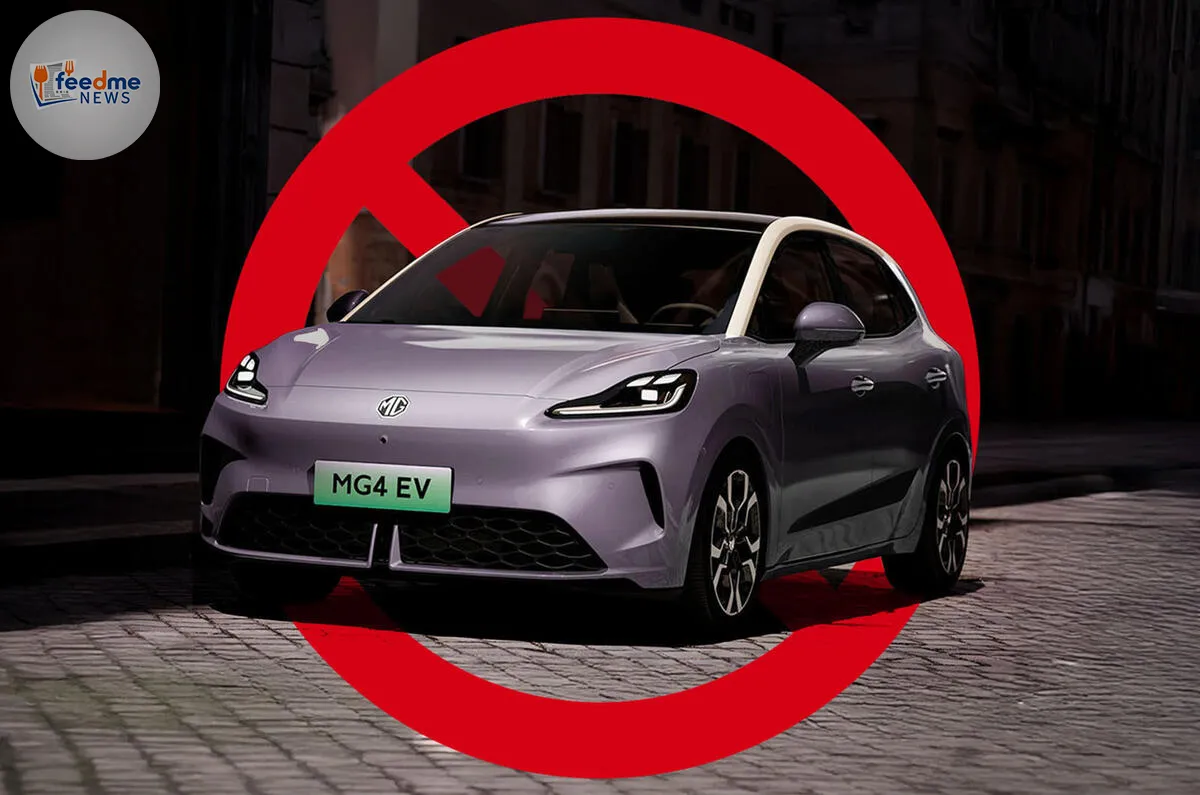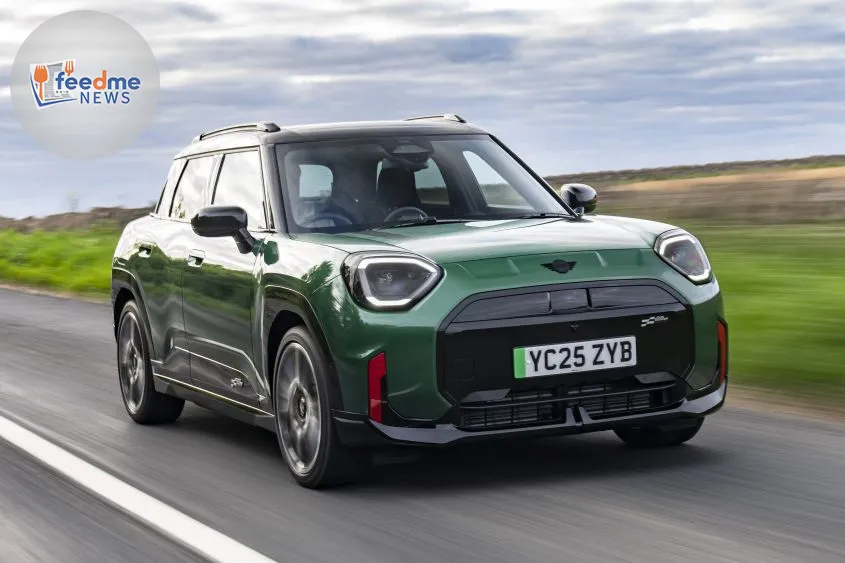MG Motor UK will not bring the second-generation MG 4 to British showrooms yet, despite the car already launching in China. Instead, the SAIC-owned brand plans a significant facelift of the current MG 4, which has built strong momentum in the UK and across Europe. The move underlines a split in product strategy between MG’s domestic and export markets, as the company looks to extend the life of its best-known electric hatchback here. The China-market car sits on a next-generation platform, stretches the wheelbase by 100mm, and shifts from rear-wheel to front-wheel drive. It also adopts a sharper, Cyberster-inspired look and a reworked interior. MG Motor UK boss David Allison told Autocar that the firm will focus on updating the existing model in the near term, while keeping options open on when to adopt the new architecture for Britain.
The comments came on Monday, 24 November 2025, in an interview with Autocar. The new-generation MG 4 entered the Chinese market in March. MG had registered the new design with European authorities, which raised expectations of a UK launch following its European roll-out. MG Motor UK has now set out its plan to facelift the current car first.

Photo Courtesy Of Autocar
MG backs a major update to extend a strong UK run
MG will prioritise a facelifted MG 4 for the UK. Allison said: “The 4 is now our oldest car, so it’s due a facelift, which will happen relatively soon.” The decision shows how MG aims to build on familiarity and proven demand rather than switch the UK to an all-new platform immediately. The current MG 4 launched as the brand’s dedicated electric hatchback and has helped mark MG’s rise as a value-focused EV player.
Allison stressed that the car’s success in Europe supports the strategy. “The MG 4 EV as we know it has been wildly successful in Europe, particularly in the UK,” he said. MG will therefore update the existing model for British buyers instead of moving directly to the second-generation car already on sale in China.
China’s new MG 4 switches layout and steps up in size
The second-generation MG 4 represents a significant engineering shift for the nameplate in its home market. The new model sits on MG’s next-generation EV platform, grows by 100mm in length, and switches from rear-wheel drive to front-wheel drive. MG also gives it a new look that draws on the MG Cyberster roadster, along with an updated cabin. The redesign aligns the hatchback more closely with the brand’s newer S5 EV crossover.
These changes reflect a fresh product cycle in China, where domestic competition and shorter update cadences often drive faster hardware changes. MG claims no UK timing for this model. The firm’s UK arm will continue to develop and promote the current platform, with a facelift planned to keep the car competitive on features and design.
Design filings raised hopes, but MG chooses a different route for now
When MG registered the new car’s design with European legislators, many expected the second-generation MG 4 to follow its China debut with a European and UK launch. That registration often signals intent to sell or protect a design in those markets. However, MG Motor UK now confirms that it will not switch the UK to the second-generation hatchback yet.
Allison left the door open to future adoption. “It’s the next-generation platform, so for the next evolution or the next generation of EVs, that’s the platform we would get,” he said. He added that MG reviews each model for the UK on its own merits: “As with lots and lots of cars, there are plenty of cars that are sold in the domestic market that we don’t take, but we have options. So if it’s decided and we think that there is an opportunity for that kind of car, we will certainly take it.”
A clear split between domestic and export strategies
The UK decision highlights how MG, under parent company SAIC, tailors its line-up to regional demand. Allison pointed to different market conditions: “It’s a different story in the domestic market. So they have changed the car quite quickly.” The China-market MG 4 follows a faster cadence with a new platform and drivetrain layout, while MG Motor UK leverages the current car’s recognition and appeal.
This regional split helps MG manage product risk and cost while keeping showroom traffic strong in Britain. A facelift typically brings styling tweaks, new technology features, and refreshed trims. MG has not detailed the update for the UK-bound MG 4 yet, but Allison’s comments suggest timing that arrives “relatively soon,” acknowledging that the model now stands as the oldest in the brand’s UK range and due for renewal.
What the platform decision could mean for UK buyers
While MG will not switch to the new platform yet, Allison’s remarks show that MG Motor UK sees value in the technology and plans to adopt it at the right stage. That approach gives current MG 4 owners and buyers clarity: MG will continue to support the model they know, and it will add improvements through the facelift. It also signals that MG’s next round of UK EVs may draw on the new architecture when the brand judges the time is right.
For UK customers, the move suggests continuity in driving experience and ownership support. The current MG 4’s architecture underpins the car’s established character in Britain. A facelift can deliver updated styling and equipment without asking buyers to adjust to a wholesale change in layout, such as the shift from rear- to front-wheel drive that defines the Chinese second-generation car.
Europe’s expectations and MG’s balancing act
The European design registration for the new MG 4 raised hopes of a cross-border roll-out. Many observers saw it as evidence that MG planned to bring the new shape and cabin to Europe quickly. MG Motor UK’s decision tempers those expectations, at least in the near term. The brand still gains flexibility by holding a design filing, but it will not commit to UK sales until it sees a clear market case.
This stance helps MG balance product novelty with proven demand. The current MG 4 remains a strong proposition for British buyers who want an electric hatchback from a known badge. By focusing on a facelift, MG keeps price positioning and brand momentum steady while aligning product timing with UK market conditions.
The competitive landscape and MG’s next moves
MG faces intense competition in the UK’s compact EV class, with rivals pushing frequent updates. MG’s choice to refresh rather than replace the MG 4 plays to its strengths. It can keep the car visible on forecourts, add features that matter to buyers, and avoid the risk that comes with a rapid platform switch. Allison’s comments confirm that MG wants to time the jump to the next-generation platform for maximum impact.
As the China-market car evolves, MG Motor UK can assess which elements to bring across when it introduces future EVs here. The brand can also use customer feedback from the facelift to shape that decision. Allison summarised the flexible approach: if MG sees the right “opportunity for that kind of car,” it will “certainly take it.”
The key takeaways for UK buyers are direct. MG Motor UK will keep the familiar MG 4 in showrooms and give it a significant update soon. The company will not launch the second-generation, front-drive model already on sale in China in the near term. Instead, it will extend the current car’s life with fresh styling and features, while keeping its options open to adopt the new platform for future models. That strategy supports continuity for owners and dealers and gives MG room to judge the best moment to roll out its next-generation architecture in Britain. Buyers can expect a facelifted MG 4 to arrive first, with the promise that MG will still tap into the new platform when it fits its UK plan.





